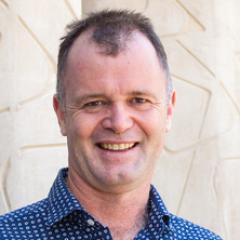Water-energy-carbon links in households and cities: a new paradigm
Water-related energy use in Australian cities accounts for some 13 per cent of the country's electricity use, 18 per cent of natural gas use and 8 per cent of Australia's GHG emissions. By 2030, energy consumption is expected to grow to 200 - 250 per cent of 2007 levels. If the water sector is to adopt the Australian government target to reduce greenhouse gas (GHG) emissions, then we must cut the equivalent of over 90 percent of the projected 2030 energy consumption levels, or reduced the GHG intensity of the energy by a similar amount, or pay for offsets. The bill for energy, for urban water, is anticipated to rise even faster, growing 500-700 per cent over the coming 25 years. This now represents a significant business risk to both the water sector and to communities relying on energy-intensive water services. Residential water use is responsible for approximately 50 per cent of urban water-related energy consumption. Hence, water conservation can be a cost-effective way to reduce energy consumption in the home and for water utilities. However, the lack of understanding of the linkages between water, energy and carbon impede the formulation of appropriate strategies.
- Understand water and energy connections in individual households.
- Characterise "household types". This will develop an understanding of different households and build a dataset of relevance to city-scale simulation.
- Understand city-scale water-related energy use and greenhouse gas emissions by using detailed household data and other city-scale information.
- Identify opportunities to reduce water-related energy. This will quantify the water and greenhouse gas reduction potential of a range of options including technological, behavioural and policy changes, in the water, energy, building and appliance sector.
Funding
- Smart Water Fund
Project Outcomes
The work will assist in understanding how changes in technology uptake or behaviour influences water use, energy use, carbon emission and costs to households. For example, the uptake of front versus top-loading machines, dishwasher models, solar hot water systems or heat pumps, the uptake of rainwater tanks with pumps and emerging technologies such as recirculating showers. The work is also expected to inform policy decision making, improve clarity for utilities and encourage a dialogue between water and energy providers, as well as the building sector and home appliance industry. It will inform the water and carbon efficient design, monitoring and management of buildings and cities of the future thus enable a new paradigm of water and energy utilities working together to achieve the vision of a sustainable city.
Publications
 Project Summary
Project Summary OzWater Paper by A. Binks
OzWater Paper by A. Binks Bors 2014 Water Temperature and Implications for Household Energy Use
Bors 2014 Water Temperature and Implications for Household Energy Use Workshop 1 - Outcomes Statement
Workshop 1 - Outcomes Statement Workshop 2 - Outcomes Statement
Workshop 2 - Outcomes Statement Water journal, Vol 41(2), pp 184 - 188. Reprinted courtesy of Australian Water Association
Water journal, Vol 41(2), pp 184 - 188. Reprinted courtesy of Australian Water Association Household Summary Reports
Household Summary Reports Grace 2014 Cold Water Temperature in Melbourne
Grace 2014 Cold Water Temperature in Melbourne Project Newsletter Update
Project Newsletter Update Water Energy Carbon Links in Households - Future Water Yearbook 2016, pp. 52-55 - Reprinted courtesy of Executive Media
Water Energy Carbon Links in Households - Future Water Yearbook 2016, pp. 52-55 - Reprinted courtesy of Executive Media

